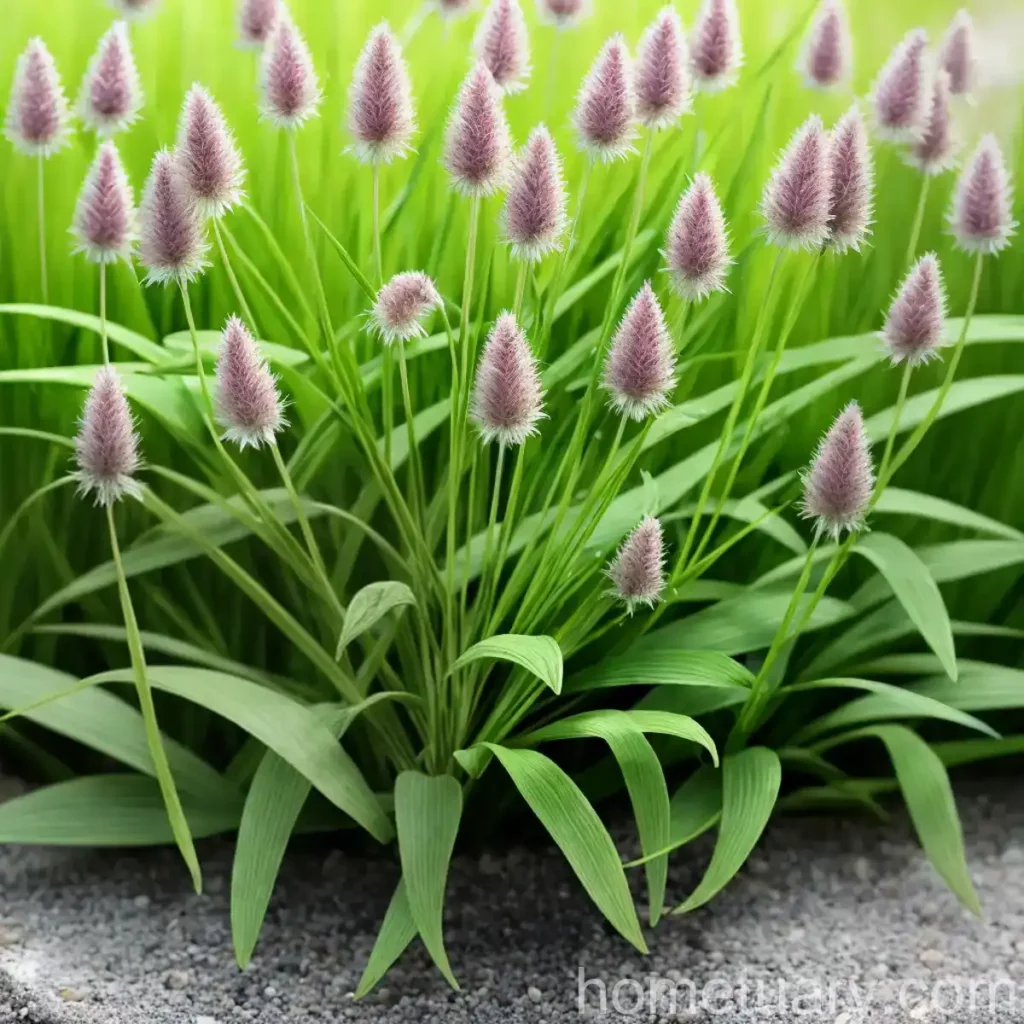What is Plant: Common Quaking Grass (Briza media)
Plants are an essential part of our ecosystem, providing oxygen, food, and habitat for various organisms. They come in various shapes, sizes, and forms, with each species having its unique characteristics and requirements. In this blog post, we will delve into the world of plants and explore the common quaking grass, scientifically known as Briza media. We will discuss its culture, uses, care requirements, propagation, diseases, and pests, providing valuable insights for plant enthusiasts, horticulturists, and botanists.
So, let’s embark on a fascinating journey to unravel the beauty and intricacies of common quaking grass.
Plant Name: Common Quaking Grass (Briza media)
Briza media, commonly known as common quaking grass, is a species of grass that belongs to the Poaceae family. It is native to Europe, North Africa, and Western Asia and is widely cultivated for its ornamental value. This grass is known for its delicate, nodding panicles, which give it a unique quivering or trembling appearance when moved by the wind.
Key Takeaways – Common Quaking Grass (Briza media)
Before we delve into the specifics of common quaking grass, let’s take a moment to understand its key takeaways to set the stage for our discussion.
- Scientific Name: Briza media
- Common Name: Common quaking grass
- Family: Poaceae
- Native Range: Europe, North Africa, Western Asia
- Ornamental Value: Delicate, nodding panicles with a quivering or trembling appearance
- Cultivation: Widely cultivated for ornamental purposes
Now that we have a brief overview of common quaking grass, let’s explore its culture, uses, and care requirements in greater detail.
Culture
The culture of common quaking grass encompasses its ideal growing conditions, habitat preferences, and the cultural practices that contribute to its health and vitality. Understanding the culture of a plant is essential for creating an environment where it can thrive and flourish.
Water
Proper watering is crucial for the health of common quaking grass. It is essential to provide consistent moisture, especially during its establishment phase and periods of prolonged drought. However, this grass is known for its tolerance to dry conditions, making it suitable for xeriscaping and low-water landscapes.
- Watering Frequency: Water deeply and infrequently, allowing the soil to dry out between waterings
- Establishment Phase: Provide regular watering to support root development
- Drought Tolerance: Well-adapted to dry conditions, suitable for xeriscaping
Sunlight
Common quaking grass thrives in full sun to partial shade, making it adaptable to a wide range of light conditions. When grown in full sun, it produces a profusion of delicate panicles that sway gracefully in the breeze, adding an enchanting touch to the landscape.
- Light Requirements: Full sun to partial shade
- Effect of Sunlight: Abundant sunlight enhances the quivering effect of the panicles
- Adaptability: Tolerant of varying light conditions
Fertilizer
While common quaking grass is relatively low-maintenance, it can benefit from occasional fertilization to support healthy growth and the development of its delicate panicles. A balanced, slow-release fertilizer can be applied in spring to provide essential nutrients without promoting excessive vegetative growth.
- Fertilization Timing: Apply a balanced, slow-release fertilizer in spring
- Nutrient Requirements: Minimal fertilizer needs, avoid excessive nitrogen
- Growth Promotion: Enhances panicle development and overall plant vigor
Soil
The ideal soil for common quaking grass is well-draining and moderately fertile. It thrives in a range of soil types, including sandy loam, loam, and rocky soils, making it adaptable to diverse growing conditions. Additionally, it exhibits good tolerance to alkaline soils, further expanding its cultivation potential.
- Soil Type: Well-draining, moderately fertile soil
- Adaptability: Thrives in sandy loam, loam, and rocky soils
- Soil pH: Tolerant of alkaline soils
Pruning
Pruning requirements for common quaking grass are minimal, mainly focused on the removal of dead or damaged foliage and panicles. Aesthetic pruning can be performed in late winter or early spring to rejuvenate the plant and encourage the development of new growth.
- Pruning Needs: Minimal pruning requirements
- Timing: Perform aesthetic pruning in late winter or early spring
- Benefits: Removal of old growth promotes new panicle development
Propagation
The propagation of common quaking grass can be accomplished through both seeds and division. Seeds can be collected from mature panicles and sown in prepared beddings, while division of mature clumps can be carried out in early spring to create new plantings.
- Propagation Methods: Seeds, Division
- Seed Collection: Harvest mature panicles for seed collection
- Division Timing: Divide mature clumps in early spring
Container Popularity
Common quaking grass is well-suited for container cultivation, adding ornamental interest to patio gardens, balconies, and outdoor living spaces. Its delicate panicles and graceful habit make it an attractive choice for container plantings.
- Container Suitability: Well-adapted to container cultivation
- Ornamental Value: Adds texture and movement to container gardens
- Cultural Requirements: Similar care needs as in-ground plantings
Uses
Common quaking grass has a range of uses, from ornamental landscaping and container gardening to floral arrangements and habitat support for pollinators. Its delicate appearance and graceful movement make it a sought-after choice for various horticultural and ecological purposes.
- Ornamental Landscaping: Adds a soft, ethereal touch to garden beds, borders, and naturalistic landscapes
- Container Gardening: Enhances the visual appeal of container plantings with its unique panicles
- Floral Arrangements: Used in dried or fresh flower arrangements for its delicate, airy panicles
- Habitat Support: Provides food and habitat for pollinators and beneficial insects
Common Diseases
While common quaking grass is relatively resistant to diseases, it can occasionally be affected by fungal infections and foliar issues. Maintaining good air circulation and proper sanitation can help prevent and manage common diseases.
- Fungal Infections: Monitor for signs of rust, leaf spot, and powdery mildew
- Leaf Health: Maintain good air circulation to prevent foliar diseases
- Sanitation: Remove and dispose of infected plant debris to prevent disease spread
Disease Diagnosis
Diagnosing diseases in common quaking grass involves careful observation of symptoms such as discoloration, lesions, powdery coatings, and overall decline in plant health. Identifying the underlying cause of the symptoms is crucial for implementing effective disease management strategies.
- Symptom Observation: Look for discoloration, lesions, powdery coatings on foliage
- Plant Health Assessment: Evaluate overall vigor and growth patterns
- Causal Identification: Determine the underlying cause of observed symptoms
Common Pests
Common quaking grass is relatively resistant to pest infestations, but it may attract occasional grazing by herbivorous insects and small mammals. Vigilance and early intervention can help protect the plant from pest damage.
- Herbivorous Insects: Monitor for grasshoppers, caterpillars, and aphids
- Mammalian Grazers: Protect from potential grazing by small mammals
- Intervention: Use physical barriers and organic deterrents as needed
Botanist’s Tips
As a botanist, it’s important to appreciate the unique characteristics of common quaking grass and its role in horticulture and ecology. Here are some tips to consider when studying or cultivating this graceful grass species.
- Observation: Take time to observe the quivering movement of the panicles in response to the wind
- Habitat Dynamics: Consider the ecological interactions facilitated by common quaking grass in natural habitats
- Cultural Significance: Explore the historical and cultural significance of quaking grass in traditional folklore and horticultural practices
Fun Facts
To add a touch of fascination to our exploration of common quaking grass, let’s uncover some fun and intriguing facts about this captivating plant.
- Inspiration for Art: Common quaking grass has inspired artists and designers with its ethereal beauty and graceful movement
- Ecological Role: It serves as an essential component of grassland ecosystems, contributing to biodiversity and habitat richness
- Historical Significance: It has been cultivated for centuries, with historical references in garden designs and floral arrangements
Links to External Resources
As we conclude our discussion on common quaking grass, it is valuable to explore additional resources and information that can enrich our understanding of this plant species. Here are some recommended links to external resources for further reading:
- Royal Horticultural Society: Briza media
- Missouri Botanical Garden: Briza media
- The Plant List: Briza media
With these resources, you can delve deeper into the botanical, horticultural, and ecological aspects of common quaking grass, gaining valuable insights from esteemed institutions and authorities in the field of plant science.
In conclusion, common quaking grass (Briza media) offers a captivating blend of ornamental beauty, ecological value, and cultural significance. Its delicate, quivering panicles and easy-going nature make it an enchanting addition to landscapes, gardens, and floral arrangements. By understanding its culture, uses, care requirements, and ecological role, we can appreciate the intricate charm of this graceful grass and celebrate its contributions to the world of plants.
Happy gardening and botanical exploration!















